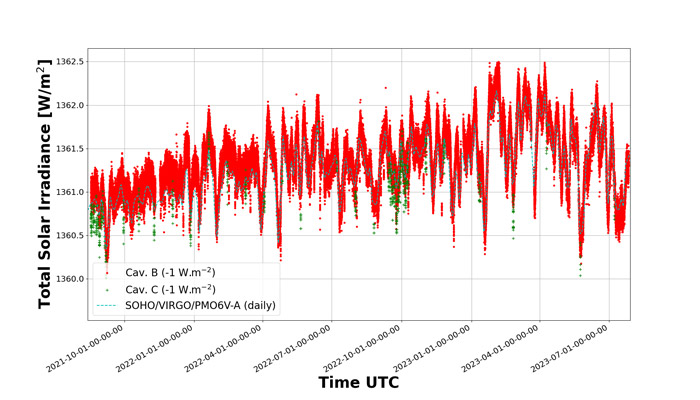JTSIM-DARA Results
Figure 1 shows the minute-rate data recorded by JTSIM-DARA cavities compared with the daily average of the PMO6-v8 product from the VIRGO radiometer onboard SOHO.
TSI results (Montillet et al., 2023) from Version 1 of the JTSIM-DARAv1 dataset can be downloaded here using an FTP client:
Data download: ftp://ftp.pmodwrc.ch/pub/data/irradiance/JTSIM/6HourlyRelease/
TSI results Version 1 – Montillet, J., Finsterle, W., Koller, S., Pfiffner, D., Gyo, M., (2023), Total Solar Irradiance Recorded by the FY3E/DARA-JTSIM Radiometer, Version 1.0, Interdisciplinary Earth Data Alliance (IEDA), https://doi.org/10.60520/IEDA/113059
**Update February 2025, Version 2** – now available on our ftp server. More information can be found at:
https://essopenarchive.org/users/529759/articles/1279052-assessment-of-instrument-performance-of-the-fy3e-jtsim-dara-radiometer-through-the-analysis-of-tsi-observations-v2


